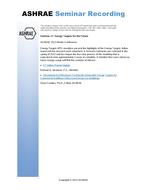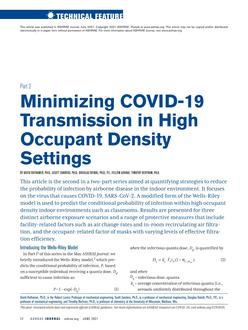Click here to purchase
This article deals with the use of the method proposed by POPPE on the thermodynamic analysis of evaporative water cooling towers of the countercurrent type. This method was developed in the 70s and is more precise in analysis than the traditional method developed by Merkel, which is well known and the most used up to today. This study is a synthesis of author’s mastering degree dissertation (Nunes, M., 2014). The Poppe method does not introduce the simplifications present in Merkel’s method, and, among the advantages it holds in, it stands out to allow a more complete analysis of heat and mass transfer processes between water and air inside the tower. On the other hand, however, its use is not so simple, because the calculation involves the solution of a system of ordinary differential equations. To solve the Merkel equation, however, a simple electronic calculator is enough. This paper presents the results of seven water cooling towers performance tests of various sizes, carried out in different places and seasons, which had initially been tested using the Merkel method. The Poppe method was used after those tests, using the same measured variables collected earlier, and the results obtained by both methods were compared. These results are presented here. Due to its good precision and reliability, furnishing more information about the thermodynamic behavior of the tower and besides the availability of mathematical tools to solve the equations, this method is intended to be used to develop new geometries and materials for the fills and also to optimize the operation with respect to the energy consumption in evaporative countercurrent towers.
Citation: 2016 Winter Conference, Orlando, FL, Conference Papers
Product Details
- Published:
- 2016
- Number of Pages:
- 8
- Units of Measure:
- Dual
- File Size:
- 1 file , 1.8 MB
- Product Code(s):
- D-OR-16-C048


